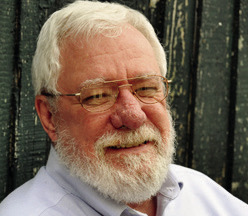Bradshaw
Father Augustus Barthélemy Langlois is buried near the epistle altar of St. Martin de Tours Church in St. Martinville. He was the revered pastor of the parish when he died on July 31, 1900, at the age of 69, but when he first came to Louisiana it was not a sure thing that he would achieve either esteem or old age.
When he arrived at Pointe-à-la-Hache in Plaquemines Parish in December 1857 for his first priestly assignment, one of the first things the shy, 25-year-old found in his church was the ripped cassock of his predecessor who had been murdered, perhaps by parishioners, for unknown reasons. He said his first Sunday Mass in an empty church, and the pews remained empty all that month, even on Christmas.
He eventually brought parishioners back to the church, but it was through his love for plants, not his preaching, that he gradually built their trust.
Langlois was born in the little town of Chavaney, France, in April 1832, and was one of four brothers who became priests. According to his obituary in the St. Martinville Weekly Messenger, “his botanical studies commenced early life.” He created a herbarium containing more than 1,200 plants when he was still a teenager.
His interest in botany continued when he began his studies for the priesthood in France and after he came to the United States in 1855 to study at the Mount St. Mary Seminary in Cincinnati. He was ordained there in June 1857 by Archbishop Jean Baptiste Purcell and given Pointe-à-la-Hache as his first assignment.
He found in swampy south Louisiana hundreds of plants unknown to the outside world. Many of them had never been seen by anyone trained in botany, let alone collected or cataloged. He began gathering specimens, but didn’t know what they were called or who to talk to about them. He sent about 300 plants to France, hoping that botanists there would look them over, but got no response.

Bradshaw
However, the young pastor’s interest in their plants was noticed by a handful of his recalcitrant parishioners, and a few of them began to talk to him about them. That common interest in plants may have been the only way Father Langlois could have reached them. According to his obituary, he “was a man with no social inclinations, on the contrary all his time was spent in religious and scientific researches.”
He asked what the local people called each plant and kept digging to find the proper Latin names for plants colloquially named oyster grass, or pigweed, or paille d’oie (goose straw). He spread the word that he was interested in gathering particular plants, and new faces began showing up at the rectory, bringing new specimens for his collection. After that, some of those faces began to be seen in the pews of his church.
After many years of work by himself, “being stationed in a district far removed from any public library and completely out of touch with his brother botanists,” he heard of a botanist at a seminary in New York. He wrote to him and asked if he would be interested in looking at his wetland plants. That finally gave him a connection with the outside world.
Father Langlois stayed at Pointe-à-la-Hache for 35 years before being sent to St. Martinville in 1887. By then he had established a reputation not only as a holy and able priest but also as one of the preeminent botanists in Louisiana. By the time he moved to St. Martinville, his plant collection and his church were both full.
Louisiana writer Harnett T. Kane described his farewell from the parishioners that had once ostracized him: “Out of the marsh, from the oyster reefs, from the river mouths, thousands came for his last service, to cry at his farewell sermon, to shake hands with him afterward. . . . An organization of laymen which had been formed some years earlier lined up and fired guns into the air in salute.” (Deep Delta Country, New York, 1944) His final send-off was just as impressive when he died after more than a decade in St. Martinville. His funeral service, the Messenger reported, “was one of the most imposing ever seen here … the spacious church was crowded to the door.”
He may be the only priest whose passing was noted in the scholarly Botanical Journal. Some 20,000 plant specimens he gathered in south Louisiana now reside at Catholic University in Washington, DC.
You can contact Jim Bradshaw at jimbradshaw4321@ gmail.com or P.O. Box 1121, Washington LA 70589.

